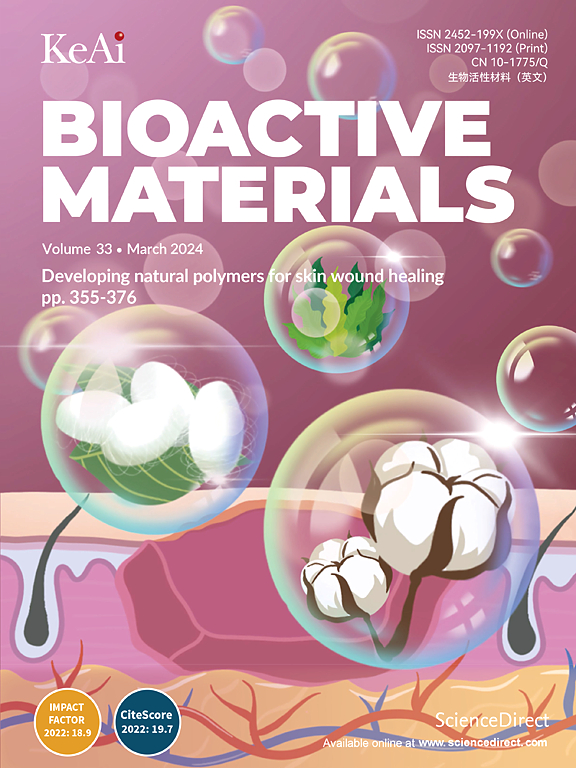Multiscale mechanical-adapted hydrogels for the repair of intervertebral disc degeneration
IF 18
1区 医学
Q1 ENGINEERING, BIOMEDICAL
引用次数: 0
Abstract
Nucleus pulposus (NP) tissue engineering brings new hope in the repair of intervertebral disc degeneration (IVDD). IVDD is often accompanied by multiscale changes in the mechanical microenvironment, including the changes of mechanical property of collagen fibril, NP tissue, and mechanical instability of spine. In this study, a multiscale mechanically-adapted strategy is proposed to promote NP repair. To achieve this goal, a viscoelastic-adapted dual-network hydrogel (PVA-DN) is constructed. The hydrogel with multiscale tunable viscoelasticity and dynamic compression condition is used to meet the multiscale mechanical requirements of NP regeneration. The results show that the viscoelastic hydrogel promotes the proliferation, migration and adhesion of nucleus pulposus cell (NPC) as well as the secretion of NP-specific extracellular matrix. RNA-seq results show that it attenuates the inflammatory microenvironment by inhibiting the IL-17 signaling pathway. Appropriate dynamic compression applied to the viscoelastic scaffold further promotes the physiological function of NPC, and the viscoelasticity of hydrogel protects against NPC damage induced by excessive compression. Animal experiments demonstrate that the viscoelastic hydrogel effectively restores disc mechanical function and delays disc degeneration in rats. Findings from this study highlight that the multiscale mechanically-adapted strategy is effective in the repair of IVDD.

求助全文
约1分钟内获得全文
求助全文
来源期刊

Bioactive Materials
Biochemistry, Genetics and Molecular Biology-Biotechnology
CiteScore
28.00
自引率
6.30%
发文量
436
审稿时长
20 days
期刊介绍:
Bioactive Materials is a peer-reviewed research publication that focuses on advancements in bioactive materials. The journal accepts research papers, reviews, and rapid communications in the field of next-generation biomaterials that interact with cells, tissues, and organs in various living organisms.
The primary goal of Bioactive Materials is to promote the science and engineering of biomaterials that exhibit adaptiveness to the biological environment. These materials are specifically designed to stimulate or direct appropriate cell and tissue responses or regulate interactions with microorganisms.
The journal covers a wide range of bioactive materials, including those that are engineered or designed in terms of their physical form (e.g. particulate, fiber), topology (e.g. porosity, surface roughness), or dimensions (ranging from macro to nano-scales). Contributions are sought from the following categories of bioactive materials:
Bioactive metals and alloys
Bioactive inorganics: ceramics, glasses, and carbon-based materials
Bioactive polymers and gels
Bioactive materials derived from natural sources
Bioactive composites
These materials find applications in human and veterinary medicine, such as implants, tissue engineering scaffolds, cell/drug/gene carriers, as well as imaging and sensing devices.
 求助内容:
求助内容: 应助结果提醒方式:
应助结果提醒方式:


